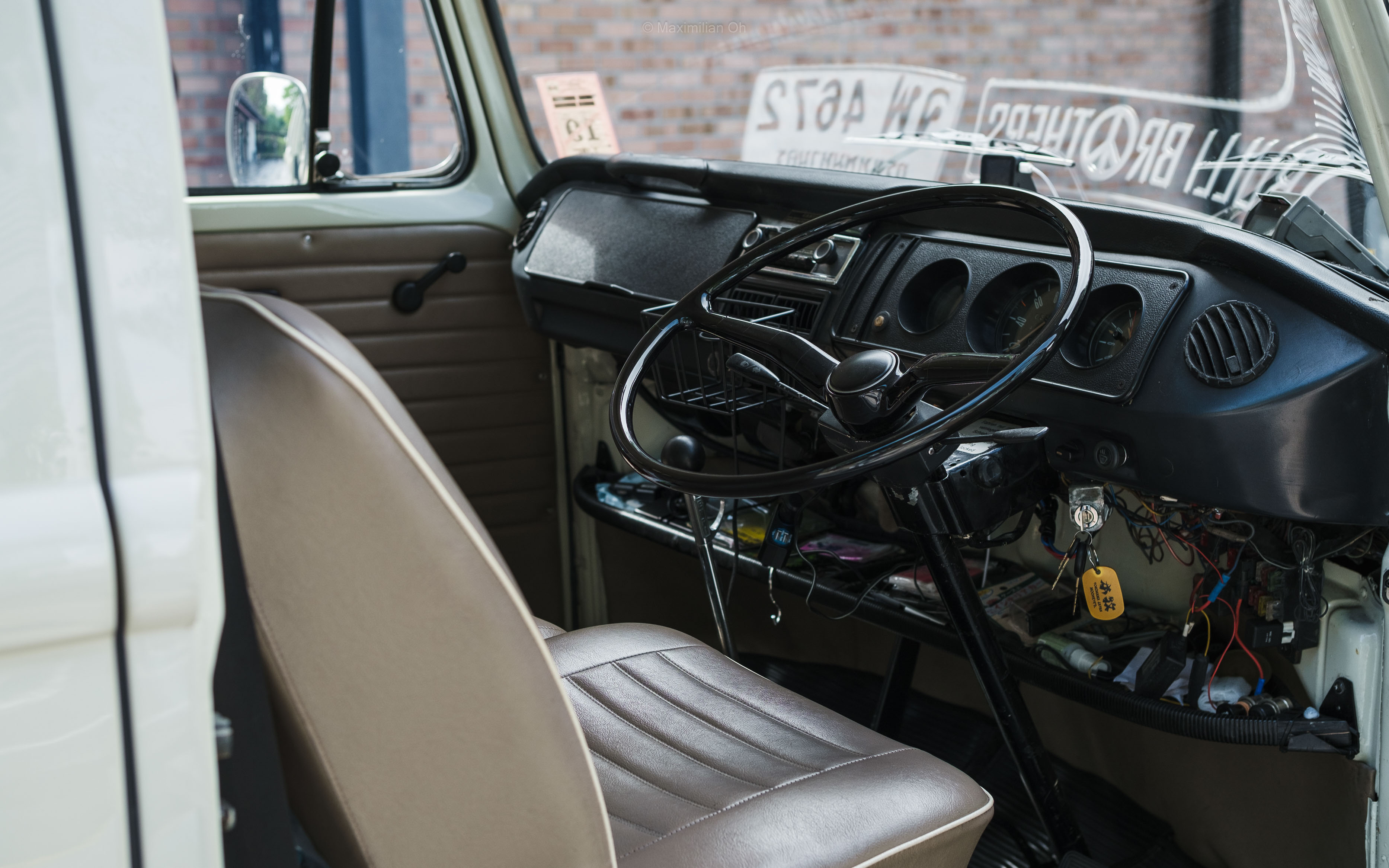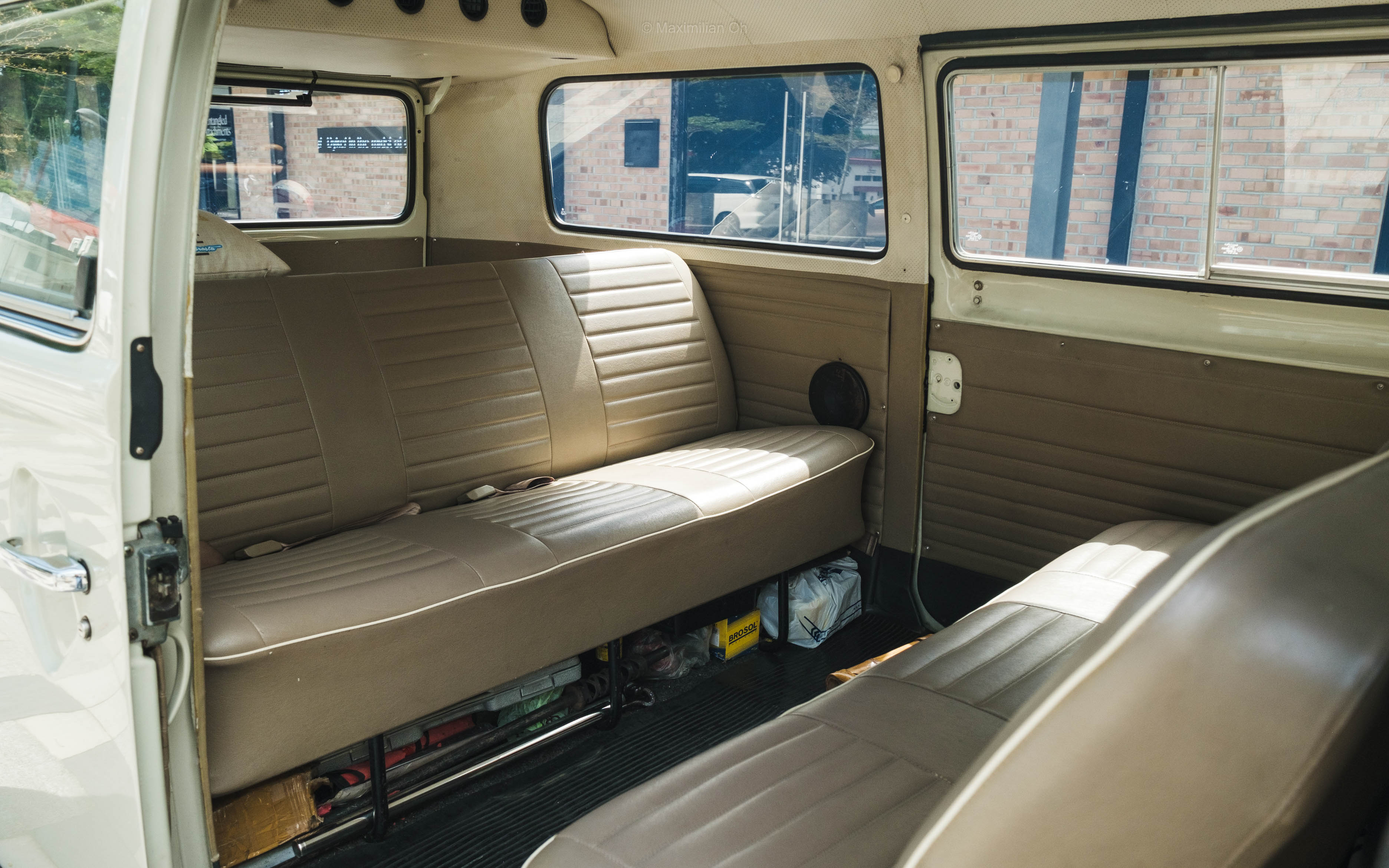ITHL: Volkswagen Type 2 Kombi - Nothing Compares
No modern vehicle compares to the classic Volkswagen Type 2, a well-loved and iconic piece of machinery.
And there’s a good reason for that. The Type 2s were built during a time when going on a road trip with your friends was what people did for fun. With group recreational activities now easily accessible, modern vehicles are built less for road trips and more for heading over to the shopping mall.
Humble beginnings

The Type 2 was Volkswagen’s second vehicle after the Beetle — the Type 1. It was created when Volkswagen importer Ben Pon witnessed improvised forklifts made out of the chassis of Beetles being used at the Volkswagen factory. These Plattenwagens were manufactured by Volkswagen to support Beetle production in the wake of a shortage of forklifts.
Realising that the Type 1 chassis was extremely modular, Pon was inspired to build a van out of it. While it never became the chassis for the Type 2 due to being too weak for a van, the Type 2 was eventually created when a stronger chassis was developed. Volkswagen released the Type 2 in many variants, including the Kombi. A combination of a van and a bus, the Kombi was popular among those who wanted some flexibility.
A storied past

While the first generation of the Type 2 was best known for its iconic ‘V’ grille and split windows, the second generation dropped both in favour of a more refined look. Released in 1967, the T2s were produced up until relatively recently, when Brazillian production was halted in 2013 due to safety measures for newly-produced cars.

This is a T2b, which was facelifted in 1972 to feature redesigned and relocated front turn signals, square-profiled bumpers, and a smaller ‘VW’ emblem. Fans of Back to the Future may find this familiar — while the star of the film is a DeLorean, the T2b played a key role in the film’s storyline as well, being the vehicle of choice for the Libyan terrorists chasing Doc.

It is one of the few black-plated T2s left in Singapore, being imported brand-new during its original production cycle and registered in 1983. An interesting historical artefact is an area license that was needed to access the Restricted Zone under the Area Licensing Scheme from 1975 to 1988, before the Electronic Road Pricing was introduced.
Road trip machine


To be specific, this is a Kombi with a ‘234’ model code, meaning that it is a right-hand drive with a sliding door on the left side. What makes this particular Kombi very rare is that it has sliding doors on both sides — an option the initial buyer paid for. The furthest it has been with its current owner is Thailand, with him having driven there multiple times for road trips, car meets, and even just to get the hard-to-find whitewall tyres.

Extremely reliable and reparable, regular maintenance helps to make sure the Kombi doesn’t break down suddenly. This reliability is something that you can only dream of with modern cars, as a pothole can lead to a symphony of ‘bongs’ that will put your car in the workshop for weeks. After a full maintenance by the current owner when he first acquired it in 2009, spare parts are only brought along for road trips.


You won’t find a world of plastic in the interior, with the Kombi having a mixture of wood, leather, and metal. It’s still comfortable after nearly 50 years, with soft leather seats and great visibility. The ride isn’t hard like most commercial vehicles these days, though it is a little on the softer side. The original radio doesn’t work, but it’s a nice remnant of the technology that came on vehicles in the 1970s.

Moving to the rear and you’ll see what makes the Kombi so brilliant. Fitted with two rows of removable seats, the Kombi can comfortably carry six passengers in the rear, with plenty of space left in the designated ‘boot’ area above the engine. Your passengers won’t be uncomfortable either, with soft leather seats and cloth door panels that make you feel like you’re in an 80s diner.

While there is already plenty of room for six passengers, if you’re only carrying three in the rear you can remove one of the seats for even more space to carry more cargo. There’s a reason why T2s are popular for campervan conversions — there’s plenty of space to sleep on the Kombi’s floor if you need to.
Classics are just better

Sure, if you want the latest technology and something made after you were born, you can buy a modern-day van or bus and make it your own. But you likely won’t be able to work on it yourself given the complexity of modern-day engines, and any mechanical part you need is probably only available from the authorised workshop.
More importantly, classics like the Kombi have souls that you just can’t ignore. These machines weren’t built to be replaced by an eventual facelift or to need an engine overhaul every five years. They were built to live on for years and years, living their own lives with their own stories through likely multiple owners.
When you buy a classic, you’re not buying a car, you’re adopting a soulful machine with its own story to tell, and that gives you a reason to make new ones with it — until that chapter is closed and it’s time for a new one.

#savetheclassics
Epilogue
Put on Born To Be Wild and enjoy these pictures of the Kombi’s adventures, courtesy of the owner.







If you are a fan of vehicles like the Volkswagen Type 2 Kombi, Check out the Singapore Aircooled VW Enthusiasts (SAVE) group on Facebook.
Photo Credits: Maximilian Oh (@mexsimilien)
Super App for
Vehicle Owners
Read More: ITHL: Nissan Skyline GT-R BNR32 - The Nissan That Brought Down Giants
Download the Motorist App now. Designed by drivers for drivers, this all-in-one app lets you receive the latest traffic updates, gives you access to live traffic cameras, and helps you manage LTA and vehicle matters.
Did you know we have a Motorist Telegram Channel? Created exclusively for drivers and car owners in Singapore, you can get instant info about our latest promotions, articles, tips & hacks, or simply chat with the Motorist Team and fellow drivers.

